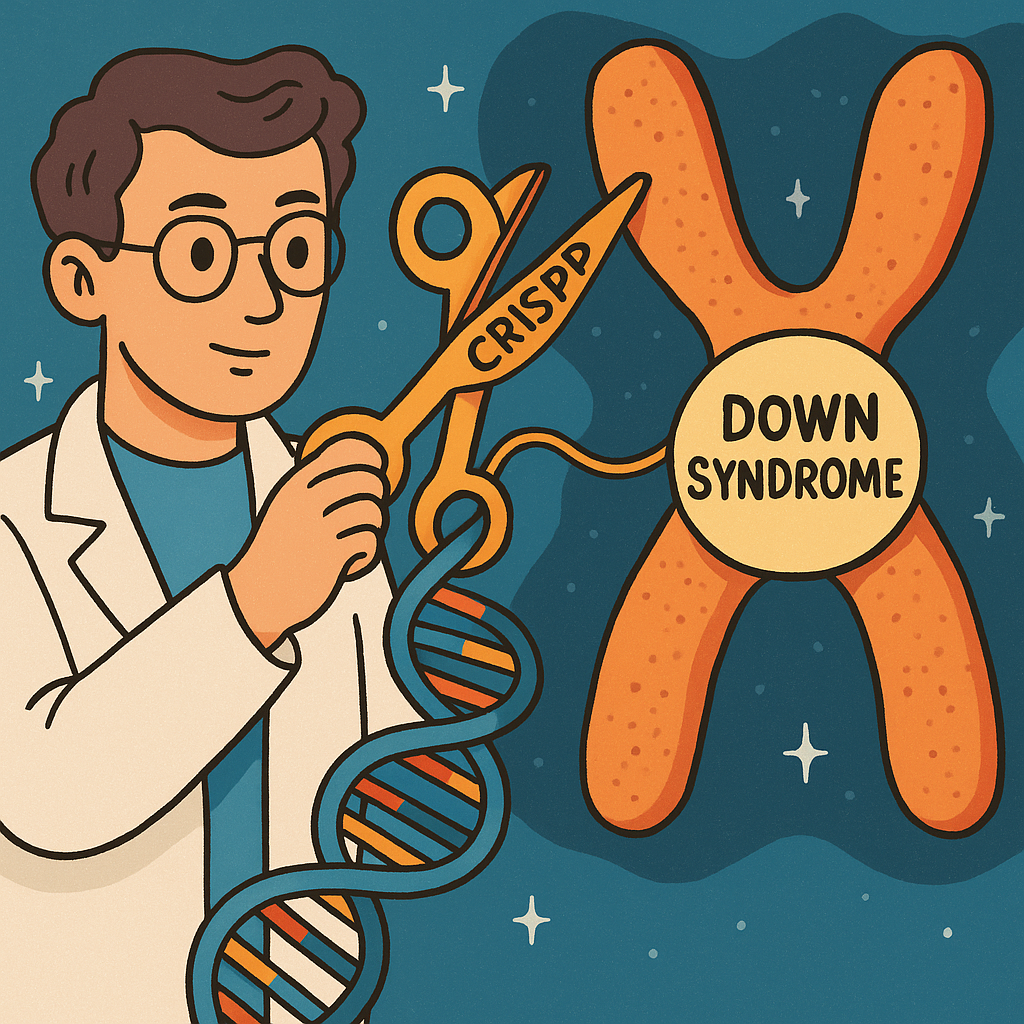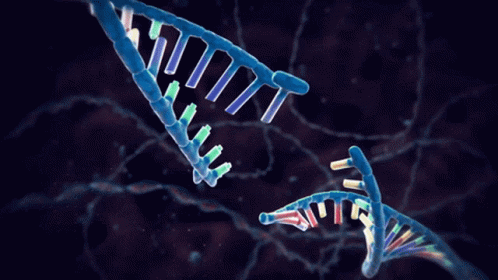🧬 Gene Fixers: CRISPR and a New Frontier in Down Syndrome Research

The Varrock Street Journal | Natural Sciences Newsletter
Hello again wonderful readers of the Varrock Street Journal,
Have you ever imagined a world where we could gently “edit out” the biological hiccups that cause serious conditions like Down syndrome?
That dream may be closer to reality than we think. This week, we’re diving into an eye-opening study that’s making waves in the world of genetic research. Scientists have now used the gene-editing tool CRISPR-Cas9 to remove extra chromosomes from cells with Trisomy 21 (Down syndrome), with promising results in restoring function. The work—both technical and ethical—is bold, and it could change how we approach not just Down syndrome, but chromosomal abnormalities more broadly. Let's explore the science, the goals, the hope—and the caution.

Summary of the Research
The article reports on groundbreaking research published by a team of scientists at Yale University, where CRISPR-Cas9 gene-editing was used to eliminate the extra copy of chromosome 21 from cells affected by Down syndrome. This condition occurs when individuals inherit an extra chromosome 21 (hence "trisomy 21"), leading to cognitive delays, congenital heart defects, and increased risk of Alzheimer's disease, among other symptoms.
In laboratory experiments, researchers successfully targeted and disabled the extra chromosome in induced pluripotent stem cells—cells derived from Down syndrome patients. After removing the chromosome, the corrected cells began functioning more like typical cells, suggesting a partial restoration of normal cellular activity.
Although this work is still in the early stages, and not ready for clinical use, it offers a proof-of-concept that targeting whole chromosomes might one day be a viable therapeutic strategy. This leap is significantly more complex than correcting a single mutated gene—it involves correcting an entire chromosome set!

Why This Matters
This study represents a critical advance in what might become a new class of gene therapies. Unlike other genetic disorders caused by a single faulty gene, Down syndrome and other trisomies are due to the presence of an entire extra chromosome. Until now, this was considered virtually untreatable.
If this method could one day be translated into safe and ethical in vivo treatments (within a living human body), it might not only improve neurological development but could also reduce the risk of early-onset dementia, autoimmune issues, and cardiac abnormalities associated with the condition.
Beyond Down syndrome, the technique could have implications for Trisomy 13 (Patau syndrome), Trisomy 18 (Edwards syndrome), and certain forms of cancer where chromosome missegregation occurs.
Here is a video talking about the mechanism behind how these chromosomal abnormalities occur!
Spotlight on the Future
So where are we headed with this?
- Preclinical Research – The work will need to be validated in animal models to determine safety and effectiveness in more complex systems.
- Ethical Frontiers – As we step into genome-scale interventions, bioethicists and regulatory bodies must navigate the deeply human questions: Should we “correct” Down syndrome? How do we preserve the dignity and autonomy of individuals living full, meaningful lives with trisomy?
- Hope for Targeted Therapies – While we’re far from editing human embryos or treating babies in utero, these cellular-level successes may pave the way for targeted organ therapies, such as correcting heart or brain cells impacted by the condition.
Did You Know?
💡 The first successful use of CRISPR to correct a single gene mutation in humans occurred in 2020, in patients with sickle cell disease.
💡 The average number of protein-coding genes on chromosome 21 is around 200–300, but their overexpression in trisomy leads to a complex range of symptoms.
💡 Down syndrome is the most common chromosomal condition, occurring in 1 in every 700 babies born in the U.S.
Final Thoughts
This research is a reminder that the boundary between science fiction and medical science keeps narrowing. The ability to precisely remove an extra chromosome is more than a technical feat—it’s a philosophical moment. It challenges how we define health, identity, and the nature of intervention.
As with all gene-editing advancements, the promise is immense—but so is the responsibility.
References
- Earth.com. (2024). CRISPR used to remove extra chromosomes in Down syndrome and restore cell function.
https://www.earth.com/news/crispr-used-to-remove-extra-chromosomes-in-down-syndrome-and-restore-cell-function/ - Li, R., et al. (2024). Elimination of trisomy 21 in Down syndrome iPSCs using CRISPR-Cas9 technology. Yale University, unpublished manuscript.
- National Down Syndrome Society. https://www.ndss.org/
